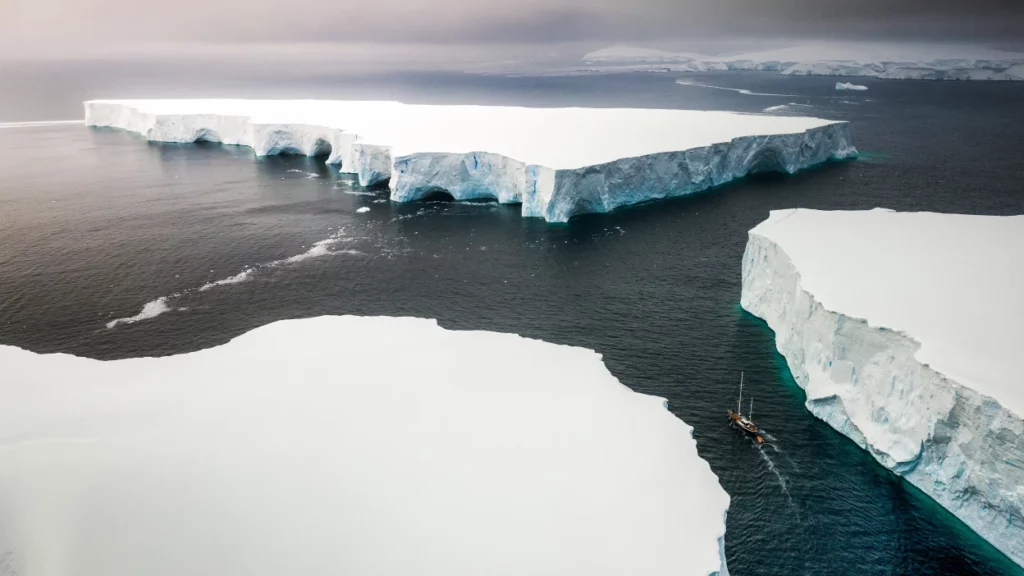From the CO2Science archive: On 2 September, 1997, Al Gore visited Montana’s Glacier National Park, as Vice President of the United States, to decry the historic recession of the park’s glaciers. He said they were melting away at an alarming rate as a result of global warming caused by anthropogenic greenhouse gas emissions. Was Al correct? A revealing paper by Pederson et al. (2004) provides the information we need to assess the veracity of his contention. Pederson and three other Montana-based scientists used tree-ring reconstructions of North Pacific surface temperature anomalies and summer drought as proxies for winter glacial accumulation and summer ablation, respectively, to create a 300-year history of regional glacial Mass Balance Potential (MBP), which they compared with historic retreats and advances of Glacier Park’s extensively-studied Jackson and Agassiz glaciers. What the scientists found was most interesting.
Paper Reviewed: Pederson, G.T., Fagre, D.B., Gray, S.T. and Graumlich, L.J. 2004. Decadal-scale climate drivers for glacial dynamics in Glacier National Park, Montana, USA. Geophysical Research Letters 31: 10.1029/2004GL019770.
As they describe it, “the maximum glacial advance of the LIA [Little Ice Age] coincides with a sustained period of positive MBP that began in the mid-1770s and was interrupted by only one brief ablation phase (~1790s) prior to the 1830s,” after which they report that “the mid-19th century retreat of the Jackson and Agassiz glaciers then coincides with a period marked by strong negative MBP.” From about 1850 onward, for example, they note that “Carrara and McGimsey (1981) indicate a modest retreat (~3-14 m/yr) for both glaciers until approximately 1917.” At that point, they further report that “the MBP shifts to an extreme negative phase that persists for ~25 yr,” during which period the glaciers retreated “at rates of greater than 100 m/yr.”
Continuing with their history, Pederson et al. report that “from the mid-1940s through the 1970s retreat rates slowed substantially, and several modest advances [our italics] were documented as the North Pacific transitioned to a cool phase [and] relatively mild summer conditions also prevailed.” Thereafter, however, from the late 1970s through the 1990s, they say that “instrumental records indicate a shift in the PDO [Pacific Decadal Oscillation] back to warmer conditions resulting in continuous, moderate retreat of the Jackson and Agassiz glaciers.”
The first illuminating aspect of this glacial history is that the post-Little Ice Age retreat of the Jackson and Agassiz glaciers began just after 1830, in harmony with the findings of a number of other studies from various parts of the world (Vincent and Vallon, 1997; Vincent, 2001, 2002; Moore et al., 2002; Yoo and D’Odorico, 2002; Gonzalez-Rouco et al. 2003; Jomelli and Pech, 2004), including the entire Northern Hemisphere (Briffa and Osborn, 2002; Esper et al., 2002), which finding stands in stark contrast to what is suggested by the IPCC-endorsed “hockeystick” temperature history of Mann et al. (1998, 1999), which does not portray any Northern Hemispheric warming until around 1910.
The second illuminating aspect of the glacial record is that the vast bulk of the glacial retreat in Glacier National Park occurred between 1830 and 1942, over which time the air’s CO2 concentration rose by only 27 ppm, which is less than a third of the total CO2 increase experienced since the start of glacial recession. Then, from the mid-1940s through the 1970s, when the air’s CO2 concentration rose by another 27 ppm, Pederson et al. report that “retreat rates slowed substantially, and several modest advances were documented.” Hence, we have a situation where the first 27 ppm increase in atmospheric CO2 concentration coincided with the great preponderance of glacial retreat experienced since the start of the warming that marked the “beginning of the end” of the Little Ice Age, but where the next 27 ppm increase in the air’s CO2 concentration coincided with little if any additional glacial retreat, when, of course, there was little if any additional warming.
Clearly, and contrary to the strident claims of Al Gore and his ilk, something other than the historic rise in the air’s CO2 content has been responsible for the disappearing ice fields of Glacier National Park; and that something has been natural or non-greenhouse-gas-induced warming, the post-Little Ice Age pattern of which has been totally out of sync with that of the concomitant increase in the air’s CO2 content.



"...strident claims..." is wrong; "...shrill..." is more appropriate.